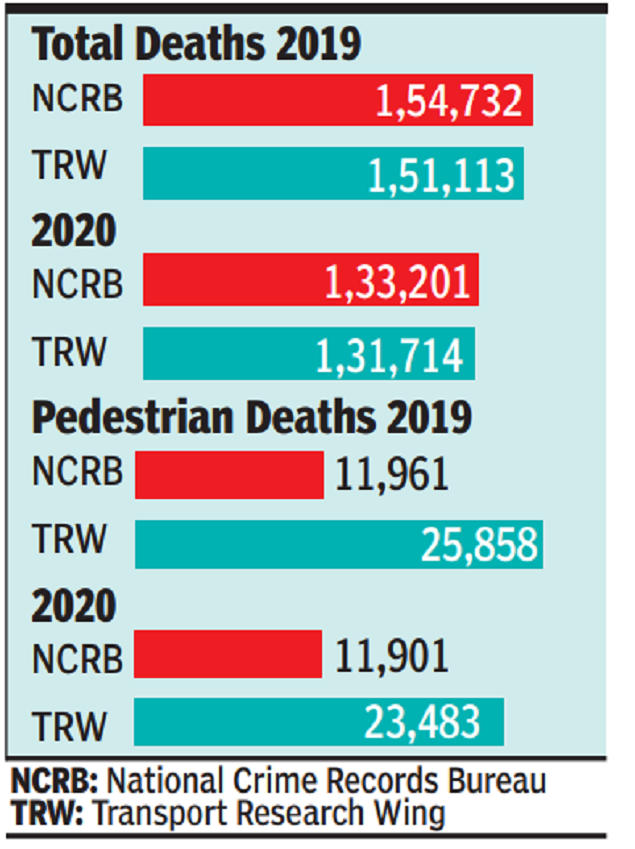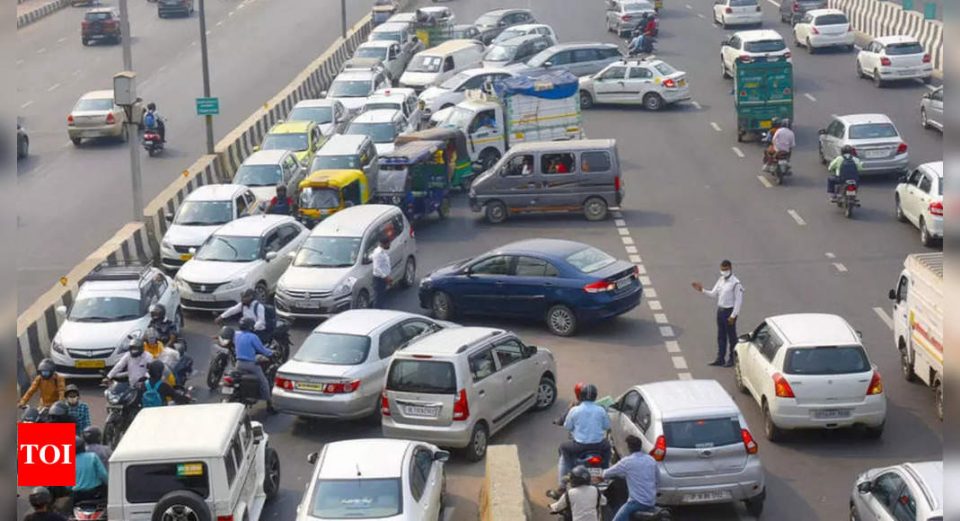Union road transport minister Nitin Gadkari this week informed the Rajya Sabha that 23,483 pedestrians lost their lives in road crashes in 2020. On the other hand, the latest report of the National Crime Records Bureau (NCRB) mentioned that 11,901 pedestrians were killed in road crashes in the same year, which is 51% less than the number quoted by the transport ministry.

Both the NCRB and the Transport Research Wing (TRW) come out with road accident reports annually. The TRW is yet to publish the road accident report for 2020. Both “only compile” data received from “state police departments”, the yearly reports published by the agencies specifically mention.
A comparative analysis of the past reports published by the two agencies shows that the data mismatch has been a legacy issue despite several attempts to bring uniformity. While there is a minor difference in the total road death figures in the two reports, there is an unbelievable difference in numbers when it comes to deaths under different categories of road users such as pedestrians, occupants in trucks and bicyclists.
Sources said while the NCRB gets data every year from the State Crime Records Bureaus (SCRBs), the TRW gets monthly numbers from state police departments and verifies them again before publishing them.
The improper capture of data has been the biggest impediment for framing right policies and measures to address any problem across the globe and this is far more important in the Indian context considering that maximum number of road deaths is reported from India.
“This has been a perennial problem and has been flagged several times. But there is hardly any improvement so far and has a direct impact on the policy making or making any other intervention to reduce road crashes and fatalities,” said Navdeep Asija, traffic adviser to the Punjab government.
Prof Venkatesh Balasubramanian from the engineering design department of IIT Madras, who has played a key role in the rollout of a new IT-based data capture of road crashes by the road transport ministry, said, “There are many reasons for discrepancy in the road accident data reported. This is one of the motivations for the road transport ministry to launch the integrated road accident database (iRAD). Having a good quality of triangulated data can help in the analysis of causes, developing interventions and impact assessment of interventions.”
So far, at least 14 states and Union territories have joined the iRAD platform for real time and online capture of road crashes and all details relating to the incidences. Balasubramanian said he is confident almost all states will be on board by the end of 2022 and from 2023, the government will be able to get all the real-time data without any scope of manipulation or human error.


